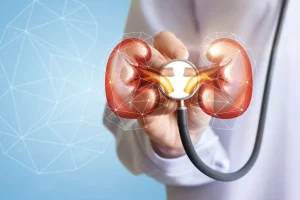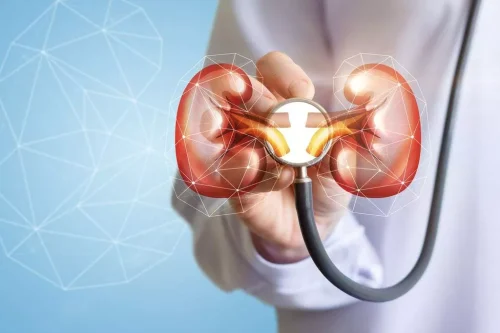How Does Alcohol Affect Your Driving? Dangers & Consequences

According to the National Highway Traffic Safety Administration (NHTSA), approximately 11,654 Americans were killed in alcohol-impaired driving crashes in 2020; deaths like these were 30% of all total motor vehicle traffic fatalities in the US. Together, the effects on impairment are additive and may even be synergistic. Chronic marijuana smokers are less impaired by both alcohol and marijuana than would be expected, however. Driving under the influence of alcohol not only poses a threat to your safety and the safety of others, but it can also have legal consequences.
Drunk driving statistics and basics
The resultant disadvantage may in turn compromise access to treatment (e.g., owing to cost or availability), heighten risk of co-occurring health problems, and perpetuate cycles of disadvantage (Schmidt et al., 2010). All alcohol-attributable mortality is in principle avoidable and future alcohol policies are likely to be most effective if they take into consideration any differential effect on socioeconomic groups (Probst et al., 2014). While nationwide the number of alcohol-impaired driving fatalities increased from 2015 to 2016, a closer examination at the state level paints a more complex picture.
- Also, what you consider one drink could actually equate to more (sometimes ~a lot~ more) than what’s recognized as a standard drink.
- At a BAC of .08 grams of alcohol per deciliter (g/dL) of blood, crash risk increases exponentially.
- Nonetheless, efforts to draw attention to “hardcore DWI offenders” (i.e. repeat offenders or those with excessively high BAC levels), as well as stricter sanctions for such persons, are common, particularly from the alcohol industry (Williams et al., 2007).
- These interventions can be delivered in person or electronically (such as on computers or cell phone apps) in many settings, such as hospitals, doctor’s offices, and universities.
- This way, the next time you’re tempted to pick up the car keys after putting down a drink, you won’t even have to weigh your options and potentially make a fatal choice.
- The DOT study mentions other transportation reasons as well, such as not wanting to leave a vehicle somewhere or having to retrieve it the next day (4).
- In addition to threatening the driver’s life and safety, driving drunk also threatens the lives and safety of other drivers and pedestrians on the roadways, causing motor vehicle crashes and more than 30% of all traffic fatalities.
Neuropsychopharmacology: Official Publication of the American College of Neuropsychopharmacology

Driving while impaired puts everyone at risk, including passengers, drivers and pedestrians. These younger demographics are more likely to take risks and generally have higher rates of alcohol consumption. Combine that with a social scene that might encourage risk-taking, or a hesitancy to leave your car and take a taxi or call a friend for a ride, or even denial or the shame of being someone who has had too much to drink to drive home… and it’s a recipe for bad decisions. Mothers Against Drunk Driving (MADD) reports that in 2021, a staggering 13,384 Americans died in alcohol-impaired driving consequences of driving drunk include: traffic deaths.
- About one-third of fatal car crashes in the United States in 2019 involved drunk drivers.
- According to Article 40 of the law, if a motorist is found to have caused the death of a person as a result driving while intoxicated or under the influence of any narcotic or psychotropic substance, he or she faces a fine of not less than Dh100,000 and/or jail for a period of not less than one year.
- You may also not realize that you are having difficulty inserting the key into the ignition.
- See Chapter 6 for information on the importance of data on place of last drink.
- The stimuli were presented in a random sequence, whereby both RT and errors were recorded.
- Interestingly, three reports indicate that chronic marijuana smokers are less susceptible to impairment from alcohol on some measures compared with nonsmokers or infrequent smokers.
The effects of alcohol dosing on driving performance on a closed course and in a driving simulator
High-visibility saturation patrols consist of a large number of law enforcement officers patrolling a specific area, usually at times and locations where crashes involving alcohol-impaired drivers are more common. These patrols should be well publicized and conducted regularly just like sobriety checkpoints. In fact, in many states with AI/AN reservations, tribal law enforcement officers do not have the authority to stop a driver suspected of being impaired once the suspect crosses the border, leaving their jurisdiction. Such limitations are especially problematic for this population, since AI/ANs are at high risk for driving while impaired and sustaining injuries or fatalities from an alcohol-related crash (Letourneau and Crump, 2016). Additional differences in policies and laws will be discussed throughout the report as they apply to various interventions for alcohol-impaired driving. Policy makers developing intervention strategies need to consider the local context in terms of knowledge, beliefs, and resources available to residents.

Risks of impaired driving

Driving performance was assessed using a Forum8 medium-fidelity driving simulator (Fig. 2) which incorporated the simulation software UC-Win/ROAD version 11 (Forum8 Co., Ltd.). Impaired driving is a leading cause of all traffic-related deaths in the United States. Just one drink before driving can put you and others in danger, because alcohol impairs thinking, reasoning and muscle coordination.

